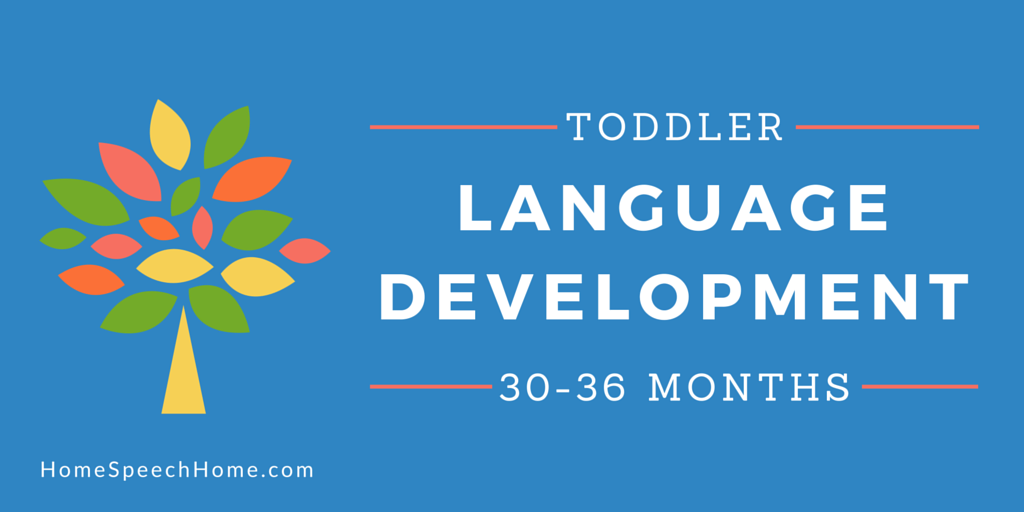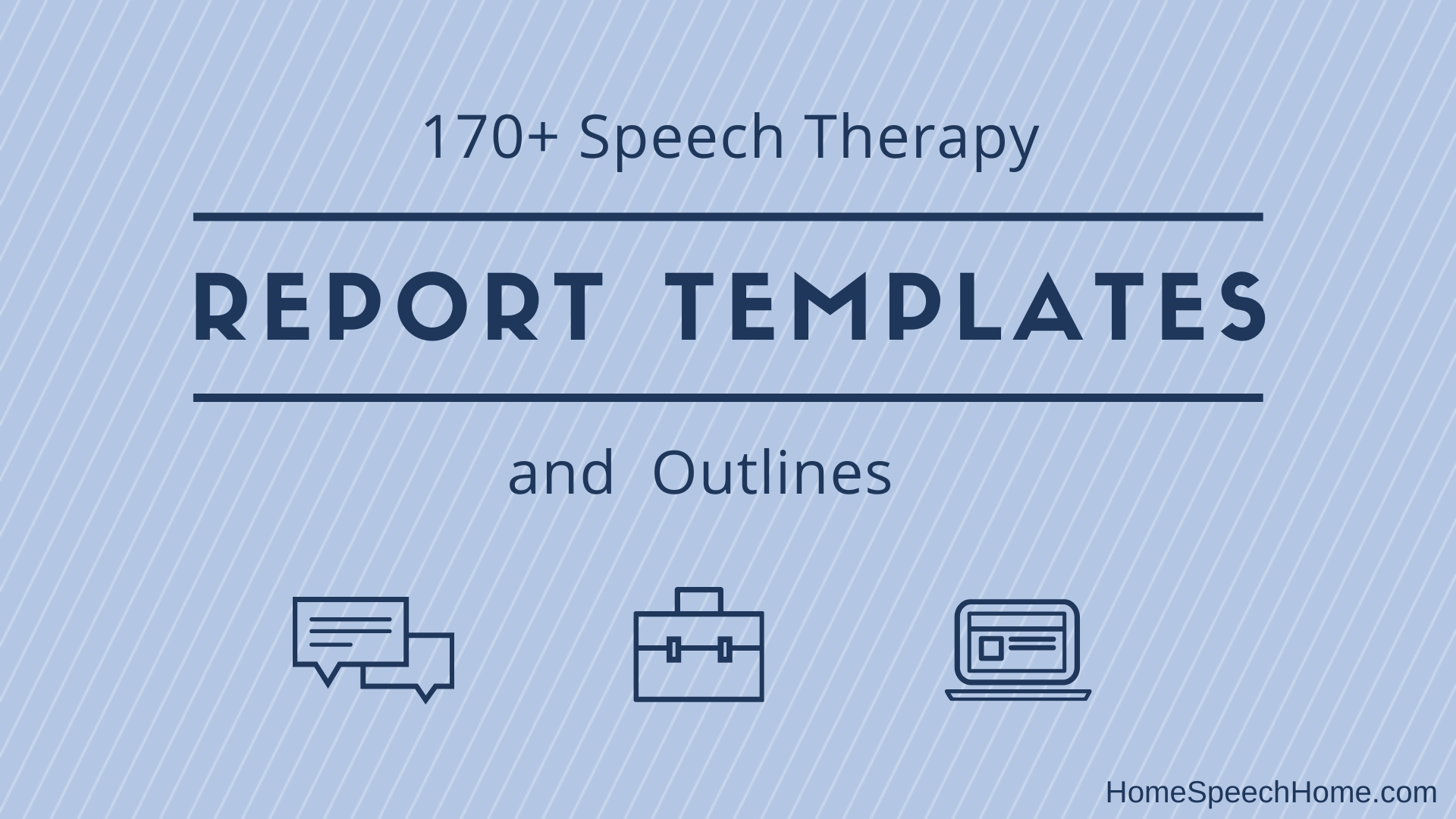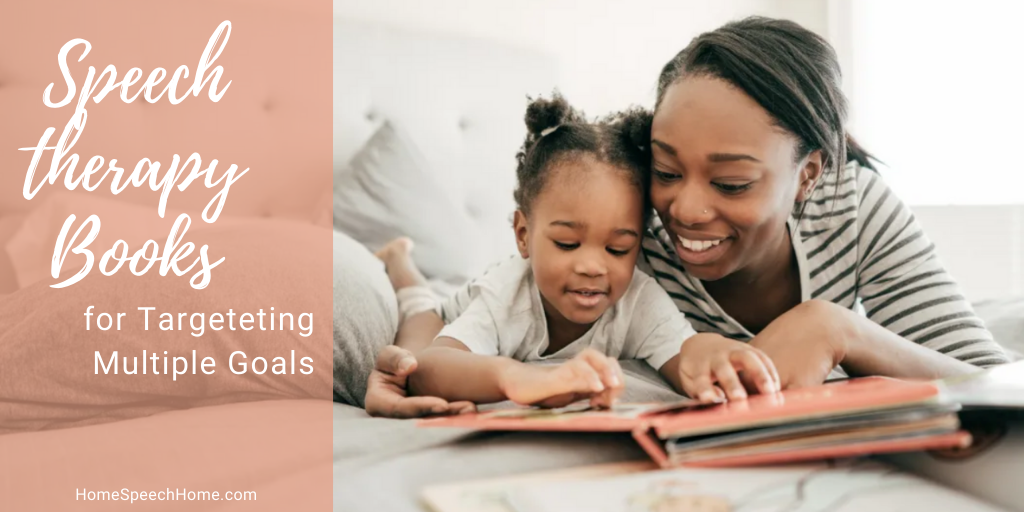What Sounds Should a 28 Month Old Baby Have

Language Development in Toddlers 30-36 Months My Favorite Developmental Stage
Linguistic communication evolution in toddlers 30-36 months: At this historic period your child's linguistic communication skills are growing crazy fast.
You may first to watch what you say more ofttimes considering...
...you never know what your child volition repeat.
SEE ALSO: Salve tons of time writing your next report with 170+ Spoken communication Therapy Report Templates!

My favorite story about my girl at this age...
One day Hollie and I were talking and she came upwardly to me and said, "Dad, they don't understand what they're doing."
Word for discussion. I kid you not. I laughed so hard.
Then I asked her who she was talking almost and she replied, "I don't know."
Permit's be honest. Kids say the funniest things. I don't even watch One-act Fundamental anymore. I don't need to with my daughter around.
30 Months (2.5 Years)
Expressive Language / What the Kid Says
- Spoken Vocabulary Size: about 546 words
- Names common objects
- Names familiar actions (buss, hug, hold, tickle)
- Names familiar basic concepts (hot, common cold, up, down)
- Says "WHERE?"
- Asks "WHY?"
- Says "big", "fiddling"
- Sentences are simple declarations or descriptions of events. Child can't tell a story/narrative yet (24-36 months)
- MLU (Hateful Length of Utterance/Average Sentence Length)
= 2.5 words
Uses These Grammar Parts/ Brown's Morphemes
- "Plural -S, -IES" on the ends of words (24-33 months)
Examples:
"Shoe
s on anxiety.""Kitt
ies running. - "Irregular Past Tense" words
(when child knows that something happened in the by so they use the correct grade of the word to show information technology) (25-26 months)Examples:
came, broke, sabbatum, went, fell
- "In"
Example:
"Spoon
in cup." - "On"
Example:
Ball
on couch."
Back to summit of language development in toddlers 30-36 months
- "Possessive S" on the ends of words (26-forty months)
Example:
"Mommy
'southward shoes." - "Uncontractible copula" (27-39 months)
Examples:
Here it is."
"There it went."
- Articles "A" and "The" (28-46 months)
Examples:
"I see
a kitty.""Throw
the ball." - "Regular Past Tense -ed" (26-48 months)
Examples:
"He push button
ed me.""She walk
ed fast." - "3rd Person Singular" (26-48 months)
Examples:
"Mommy spring
s.""He smile
s a lot." - "Contractible copula" (29-49 months)
Examples:
"That
'south mine.""He
's big."
Back to height of language evolution in toddlers 30-36 months
Receptive Language / What The Child Understands
- Understands pronouns "mine", "yours"
- Responds to "large", "trivial"
- Understands action words: spring, kick kiss, throw, etc.
- Beginning to follow 3-footstep directions
- Understands "WHY?" questions
- Understands gender: male child, girl
- Understands 3 give-and-take sentences, but context and past experience determine the pregnant, don't empathize give-and-take lodge still
(responds by doing the what was mentioned in the virtually familiar, probable location, and in the nigh familiar, probable manner, and but fills in the missing information with their existing knowledge)
- Follows 2-step related directions
Examples:
"Go go your shoes and put them on."
"Get your bear and give him a hug."
Emergent Literacy Skills
- Looks at, listens to, and shows appreciation of books
Phonological Awareness
- Awareness of rhyming emerges
Social/Play
- Uses toys functionally
- Seeks adults' assistance
- Initiates interactions using signs, symbols, or words
- Enters play groups with adult assistance
- Plays for at to the lowest degree x minutes
- Gives up a toy easily when they are washed with it
- Attends during grouping activities
- Symbolic Play Level increases rapidly, pretending improves
Level iii (24-36 months) - Extends pretending to involve objects of action or other people/dollsExamples:
Feeds doll.
Pretends to sweep the flooring.
Moves car/block and makes motorcar sounds.
Level 4 (24-36 months) - Pretends to do actions, followed past doing it on others, then by related actions.Examples:
Combs own air, then combs mom's hair.
Drinks from canteen, then feeds the doll.
Kisses doll, puts it to bed, puts coating on.
Stirs in the pot, feeds doll, and washes dishes.
Level five (24-36 months) - Plans alee what deportment to do and tells with words or gestures.Case:
Finds the fe, sets it down, searches for the cloth, tossing bated several objects. When fabric is found, irons it. Picks up the bottle, says "baby", and then feeds the doll and covers it with a cloth.
Back to top of linguistic communication evolution in toddlers 30-36 months
The Best Gratis App for Speech Therapy


36 Months (3 Years)
Expressive Language / What The Child Says
- Asks "WHO?", "WHOSE?", "WHY?", "HOW MANY?"
- Asks "HOW?" at iii years 6 months
- Uses "hard/soft", "hot/cold", "over/under"
- Uses pronouns "I, y'all, he, she, they"
- Uses at to the lowest degree 1 state of being/auxiliary verb: "is, am, are"
- Says "plural s, ies" on the ends of words
- MLU (Mean Length of Utterance/Average Sentence Length)
iii years = 3.2 words
3.5 years = 3.eight words
Uses These Grammer Parts/ Brown'southward Morphemes
- "Possessive S" on the ends of words (26-forty months)
Example:
"Mommy
's shoes." - "Uncontractible copula" (27-39 months)
Examples:
"Hither
it is.""In that location
it went." - Articles "A" and "The" (28-46 months)
Examples:
"I run into
a kitty.""Throw
the ball." - "Regular By Tense -ed" (26-48 months)
Examples:
"He push button
ed me.""She walk
ed fast." - "3rd Person Atypical" (26-48 months)
Examples:
"Mommy leap
s.""He smiling
s a lot." - "Contractible copula" (29-49 months)
Examples:
"That
's mine.""He
's large." - "Irregular third person" (28-50 months)
Examples:
does, has
- "Contractible auxillary" (thirty-l months)
Examples:
"Daddy
'south drinking juice.""Joey
's my best friend."
Back to top of language development in toddlers thirty-36 months
Sentences Become More Complex With These Forms
- gonna, havta, allow's, let me
- to + verb = want to jump
- like to play
- and, but, or
- know, wonder, think, pretend, promise, show, forget
Receptive Linguistic communication / What The Kid Understands
- Prepositions: beside, in, in-forepart-of, next-to, on, over, out, under
- Understands hard/soft and hot/common cold
- Answers aye/no questions correctly
- Answers bones "who", "what", "where", "whose", and "why" questions
- Understands basic colour words
- Understands basic kinship terms (aunt/uncle, grandma/grandad, brother/sister)
- Understands basic shapes (circle, square, triangle)
- Follows 2-step unrelated directions, in guild (ability to follow more than complex directions increases speedily over the next yr)
Instance:
Go get the brawl and knock on the door.
- Understands difference between unmarried and plural words
Examples:
You lot say, "Go the loving cup," and they get ane cup.
Yous say, "Become the cup
s," and they get all of the cups. - Understands "Same/Different"
Instance:
You lot say, "Get the socks that are dissimilar," and they will cull the socks that don't match.
Understands "not"
Example:
Yous say, "Get the crayon that is
not red," and they cull a crayon of a different colour. - Understands "His/Hers"
Example:
Yous say, "Become his shoes," and they will choose the boy shoes.
- Answer "what" questions that require inference (using facts they already know or encounter to brand their "all-time guess")
Case:
You ask, "What do you lot retrieve happened to that boy's human knee?", while looking at a pic of a boy with a hurt knee continuing next to a cycle. Kid answers, "He fell off his bike."
- Knows the functions of objects and can answer questions about the employ of objects
Examples:
Enquire "What do we do with scissors?" They respond, "cut..."
- Groups items past category
Examples:
Puts all the "large" toys here and "small" toys at that place.
Divides clean laundry in to "Daddy'due south, Mommy'south, and Mine"
Back to top of language development in toddlers 30-36 months
Narrative Development
- Stories are mainly descriptions or they explain in order (sequence) how something happened. They label and describe events around a character/person but in that location is no plot.
Example:
and then... so... and and then... and then...
Phonological Awareness
- Rhyming increases
- Alliteration begins (aware of words start with the same letter)
Examples:
"Mommy fabricated magic marshmallows"
"Daring daddy pigeon deep"
- Division, blending, and manipulating of words and syllables begins
Examples:
Put the words "butter" and "wing" together and y'all go..."butterfly"
Take "room" off of "bedchamber" and you lot get... "bed"
Change "cat" to a new word past putting "p" in the front and it becomes... "pat"
Have the "t" off the cease of "cat" and you lot have... "ca"
Put "s" on the end of "true cat" and you lot have... "cats"
- Letter sounds and written letter/symbol awareness begins (character/phoneme sensation)
Examples:
"S" is the proper name of the letter, information technology makes the "ssssss"
sound, and it looks like this...S.
Dorsum to top of language development in toddlers 30-36 months
Emergent Literacy Skills
- Looks at, listens to, and shows appreciation of books
- Begins to develop an agreement of the following:
Examples:
Print Functions - entertainment, self-expression, obtaining information, conveying out daily diplomacy, communicating messages, problem solving
Examples:
Print Forms and Conventions - letter names/sounds, linear arrangement of messages, words separated by spaces, book handling skills (correct-side-up or up-side-down, front/dorsum), punctuation, difference between impress and pictures, differences between letter of the alphabet, audio, word, and sentences
Examples:
Structure of books and stories - comprehend, title, beginning, heart, end, problem and what is going to happen
SEE ALSO: The All-time Books for Speech Therapy Practice

Social/Play
- Plays with 2 or 3 children at a time
- Seeks out a consequent friend and plays with them
- Responds to peers requests
- Participates during group activities with an adult leader
- Gives and takes turns with other children
- Gets some other child's attention earlier commenting to them
- Encourages or praises peers
- Accepts reasonable compromise from adults
- Uses toys to stand for unlike things
Example:
Pretends a minor square block is a prison cell phone, holds information technology to their ear, talks on it, and puts it back in pocket or purse.
- Makes comments related to play theme
Examples:
"This soup is hot!" (while pretending to stir soup)
"Quiet! Babe is sleeping." (to partner while rocking baby)
- Makes requests of peers
Examples:
"Go me the blanket."
"Come upstairs."
"Put the truck in hither."
- Makes requests of others in more than ways (Can you lot...?, Would you...?) and direct requests brainstorm to be replaced by indirect requests
Dorsum to top of language evolution in toddlers 30-36 months
Homepage > Language Development in Toddlers thirty-36 Months
Source: https://www.home-speech-home.com/language-development-in-toddlers-30-36-months.html
0 Response to "What Sounds Should a 28 Month Old Baby Have"
Post a Comment